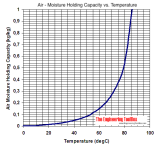Hi guys,
I’ve been doing some reading and have found a few sources that say corrosion is negligible below the freezing point.
If my plane sits outside at -13 F for longer than lycoming’s suggested 30 days between flights in your opinion will this be cause for alarm?
Thanks for your input
I’ve been doing some reading and have found a few sources that say corrosion is negligible below the freezing point.
If my plane sits outside at -13 F for longer than lycoming’s suggested 30 days between flights in your opinion will this be cause for alarm?
Thanks for your input





